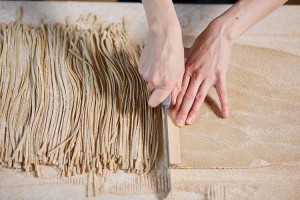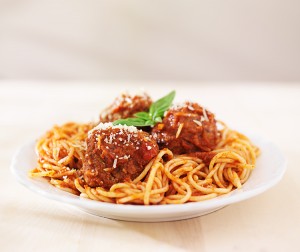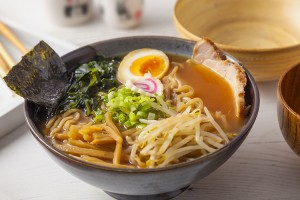World Pasta Day
Wednesday, October 25th, 2023October 25 is World Pasta Day. Pasta has been around for thousands of years. It comes in more than 100 shapes and sizes. Some of the best known are macaroni, which consists of hollow tubes; spaghetti, which is made into long cords; and of course, noodles, which are flat strips.
The word pasta is an Italian term meaning dough. The best pastas are made with semolina—the coarsely ground hard grain of durum wheat. Manufacturers mix the semolina or other flours with water and other ingredients to form a stiff dough. The dough is either pressed through a machine or rolled out and cut into the proper shapes. Spaghetti is a popular type of Italian pasta. Spaghetti can be shaped by hand, by rolling and stretching the pasta into long, thin cords. Manufacturers generally make spaghetti by pressing pasta dough through holes in a metal form called a die. The pasta is then either dried with forced air until it is hard and brittle, or it is packaged as a fresh, refrigerated product. Either way, spaghetti is generally boiled in water before serving. Pasta is often served with sauce. In Italy, spaghetti is served al dente, soft but slightly chewy.
The noodle is a long, thin strip of starchy dough that is usually boiled before eating. Noodles can be made from a variety of ingredients, including rice, wheat, or mung beans. Some of the most popular noodles include rice noodles, made of rice flour and water; udon, made of wheat flour, water, and salt; and cellophane noodles, made of water and mung bean, potato, or sweet potato starch. Egg noodles are made with wheat flour and eggs. In Asia, noodles are traditionally served with hot broth. Noodles are popular throughout the world. They are sold at restaurants and grocery stores. People can also make noodles at home.

A noodlemaker makes noodles by hand, using the roll-and-cut method. The dough is rolled out flat and then cut into long strips.
Credit: © Lyashenko Egor, Shutterstock
Such noodles as udon and soba (buckwheat noodles) are made using the roll-and-cut method. First, the noodlemaker prepares a dough and then leaves it to rest. The dough is then pressed through rollers to form long sheets. The sheets are cut into strands of the desired width. The long strands dry slowly in a special room. The noodles are then cut and packed. Noodles can also be prepared fresh. They are cooked after drying.
One popular noodle dish is ramen. Ramen is a Japanese dish of noodles in broth with other ingredients. Another popular noodle dish is pad thai. The dish is from Thailand and includes such ingredients as rice noodles, eggs, peanuts, and vegetables.
No one knows when noodles were first made. Experts believe that noodles were first produced thousands of years ago in central Asia. Noodles are mentioned in a dictionary from the A.D. 200’s in China. The earliest Chinese noodles were not strands of dough. Instead, they were shaped into little chunks. They were then cooked in boiling water.
The origins of spaghetti can be traced back to Ancient Rome, China, the Middle East, and North Africa. Pasta is easily dried and stored, which made it a popular choice for sea voyages. The invention of the hydraulic press sped up widespread production of pasta products beyond the Mediterranean. Pasta dishes have been a specialty of Italian cooking since the 1200′s, but they are now popular throughout the world. Many Italian people emigrated to the United States, helping to popularize spaghetti and other pastas in the late 1800’s. In the late 1880’s, Italian Americans began preparing spaghetti with meatballs, which became a popular dish.




